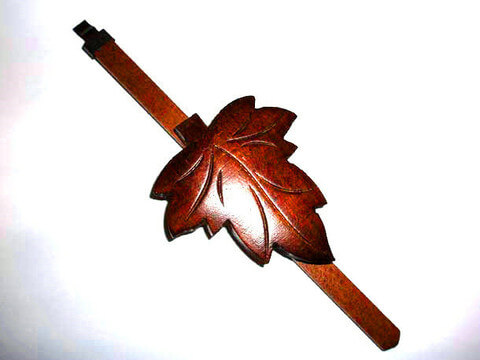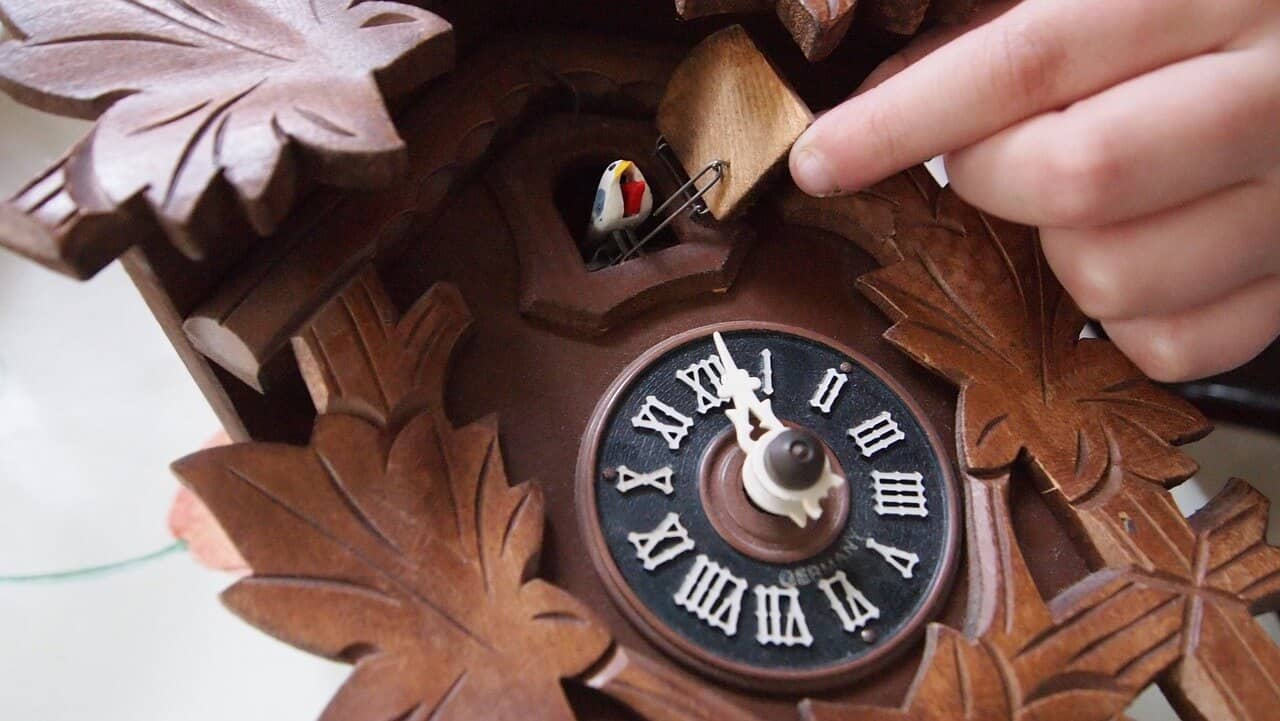How Does a Cuckoo Clock Work
Posted by Bavarian Clockworks on 1st Nov 2016
For nearly 300 years, people in the southwestern Germany region known as Black Forest, or Schwarzwald, have been crafting world-class, handmade cuckoo clocks. Although much has evolved since the 18th century, very little about how a cuckoo clock works has changed. Woodcarvers and clockmakers have preserved the art of handmade cuckoo clocks using the same mechanisms as their forbearers to produce the classic cuckoo call.
To preserve the integrity of how cuckoo clocks work, a group of cuckoo clock experts created the VdS, or Verein die Schwarzwalduhr, an association that keeps the Black Forest tradition of how cuckoo clocks work alive. Each clock made following these strict guidelines comes with a Black Forest Clock Association official certificate, which guarantees the cuckoo clock was constructed using the same time-tested mechanics and components of Black Forest cuckoo clocks from the 1700s.
Why Does The Way A Cuckoo Clock Works Matter?
Knowing how a cuckoo clock works might not seem like an important part of choosing the perfect cuckoo clock; however, a cuckoo clock’s movement is not only the mechanism that drives the clock to keep time, but it also affects many other aspects of the clock.
There are two main ways how cuckoo clocks work: mechanical movements and quartz movements. A cuckoo clock’s movement affects how often the clock is wound and how it is silenced at night. A cuckoo clock’s movement also dictates the clock’s lifespan, performance and accuracy.
How Does a Mechanical Movement Cuckoo Clock Work?

For a cuckoo clock to earn an official certificate from the Black Forest Clock Association, it must be driven by a mechanical movement. Black Forest cuckoo clocks originated before the there was electricity, so an authentic Black Forest Cuckoo Clock requires a pendulum to drive the mechanical movement of the cuckoo clock.
How a mechanical movement cuckoo clock works is all a part of the pendulum swinging back and forth at an even beat—one second for every back-and-forth movement—when weights at the bottom of the pendulum drive the movement through gravitational pull. (On a cuckoo clock, the pendulum is often in the shape of a maple leaf and the weights are in the shape of a pinecone.) The weights are on a chain that is wrapped around a chain gear that drives the cuckoo clock’s internal gears. Each swing of the pendulum is drven by the descent of the weights causing the gears to turn, making the “tick tock” sounds and cuckoo calls associated with these weight driven wall clocks clocks.
Musical cuckoo clocks have three weights, and non-musical cuckoo clocks only have two. In both types of clocks, the one weight serves as the clock’s timekeeping function, the second weight controls the cuckoo sound and the bird’s movements. In musical cuckoo clocks, there is a third weight drives the music box. The weights hang on chains underneath the cuckoo clock and slowly drop over time. When the weights reach the floor, they are simply pulled pack back up to rewind the clock.
 The rate at which the weights descend in a mechanical movement cuckoo will depend on whether it is a one-day cycle or an eight-day cycle. An eight-day movement
cuckoo clock requires winding only once per week and is generally of larger and more complex, thus making it more expensive. A one-day movement cuckoo clock requires daily
winding, has a smaller movement, and typically has lighter weights,
making it a more affordable option.
The rate at which the weights descend in a mechanical movement cuckoo will depend on whether it is a one-day cycle or an eight-day cycle. An eight-day movement
cuckoo clock requires winding only once per week and is generally of larger and more complex, thus making it more expensive. A one-day movement cuckoo clock requires daily
winding, has a smaller movement, and typically has lighter weights,
making it a more affordable option.
The manual shut-off option requires the owner to disable the sound of the clock each night and turn it back on in the morning. Some eight-day movement clocks are available with an automatic shut-off option, which turns of the cuckoo and music from 9pm to 8am. Automatic shut-offs are usually a bit more expensive than the manual shut-off option.
Most musical mechanical movement clocks play two songs. The most common are: “ The Happy Wanderer” and "Edelweiss.” An eight-day cycle cuckoo clock alternates the song on the hour, and a one-day cycle clock alternates the song every half hour.
Preserving the art and tradition of the old German clockmakers is evident in the way a mechanical movement cuckoo clock works. Not much has changed over centuries. From the animation to the music box, the mechanical cuckoo clock is driven by the weights powered completely by gravity.
How Does a Quartz Movement Cuckoo Clock?
A quartz movement cuckoo clock is battery-operated , as opposed to gravity-powered. The sound box and animation in quartz movement cuckoo clocks are powered by batteries and require minimal maintenance. Owners must simply change the batteries.
Quartz cuckoo clocks can also play music. Typically how these cuckoo clocks works is by electronically playing one of 12 melodies each hour.
Although an affordable alternative to mechanical movement cuckoo clocks, quartz cuckoo clocks do not quality for VdS certification because they lack the authentic mechanical movements of traditional German cuckoo clocks. However, modern clockmakers can build handmade quartz cuckoo clocks that still have an authentic look and function very well. For those interested in quartz cuckoo clocks and looking for a high-quality product, we recommend selecting one from a cuckoo clock craftsman who also builds certified mechanical cuckoo clocks.
How Does the Cuckoo Bird in the Cuckoo Clock Work?
Every hour, a tiny wooden cuckoo bird emerges from the clock and makes its call. In mechanical movement clocks, two small wooden pipes are attached to two tiny wooden bellows, or air chambers, on either side of the clock. Air fills the chambers, as the clock's movement movement activates the bellows, squeezing the air in and out of the whistles. The first bellow makes the “cu” sound, and the second bellow creates the “ckoo” sound. The depth of the cuckoo calls vary depending on the size of the clock, bellows and pipes.
All cuckoo clocks will have a cuckoo bird. The cuckoo bird’s movement in and out of the door is also driven by the clock’s movement. In quartz movement battery-powered clocks, the sound and cuckoo bird movement is produced electronically.

Modern Day Cuckoo Clocks
These days, people can choose from many different types of cuckoo clocks and choose one to their liking based on how the cuckoo clock works. Such considerations include style, personal taste, the number and detail of characters, the size, the music, the hand-carvings and paintings, and budget. To help guide your search for the perfect cuckoo clock for you, see our guide the " 7 Steps to buying an authentic cuckoo clock".
Most cuckoo clockmakers continue to produce clocks with mechanical movements following German tradition passed down for generations. They follow industry standards along with as do their suppliers. Many clockmakers source their movements from SBS Feintechnik, The world's largest producer of high-quality cuckoo clock movements, based in the Black Forest village of Schonach, Germany.
Although many things have changed in the past three centuries, cuckoo clocks continue to function much the same as they have over the centuries following strict quality standards. The present day VdS certification process helps ensure that authentic Black Forest Cuckoo Clocks will continue to be the highest quality cuckoo clocks produced in the world. Hand-carved, handmade cuckoo clocks made from the Black Forest German tradition boast quality and craftsmanship that stands the test of time.





